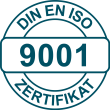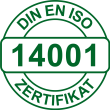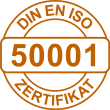3D printing for the food sector
Gripper made of PC | FFF process
3D printing – food safe possible?
Fast, cost-effective and food-safe 3D printing is supposed to deliver urgently needed components – even in small quantities. But do materials and 3D printing processes even meet the high requirements of the food industry?
What does food safe 3D printing mean?
First of all, it is important to define the term. The 3D printing of food itself – whether from edible materials or plastics for the children’s store – will not be discussed here.
“Food-safe” in this case rather means food-safe components manufactured by means of 3D printing that can be used, for example, in machines for the production or processing of food. For this purpose, the printed parts must be made of food-safe 3D printing material in the form of filament, for example, which is non-toxic and does not overlay or alter the taste and odor of the food.
Filament for food grade 3D printing
The basis of any 3D printing for the food industry is the material used. Without intermediaries, we source food-grade 3D printing material made of PETG, PP, PEKK, PPSU, PEEK directly from audited suppliers. This not only brings price advantages for our customers, but also enables a direct flow of information along the supply chain. Our partners stand for unconditional quality and excellent customer service. This enables us to answer your individual inquiries – not only regarding food-safe 3D printing material – quickly and soundly.
Conformities and approvals for food grade 3D printing
If a component is to be used in the food sector, it must almost always comply with the industry-specific approvals. Since testing is associated with effort and costs for the manufacturers of 3D printing material, the range of compliant semi-finished products is significantly reduced. In addition to the classic EU conformities such as REACh and RoHS, selected filament also fulfills the approval according to FDA and EU 1935/2004 or EU 10/2011.
3D printing – food safety limits
As a professional for industrial-quality 3D printed parts, Hänssler already meets a wide range of requirements to ensure maximum product safety. Thanks to the large number of our own 3D printers and matching accessories, we are always mindful of minimizing contamination with non-food grade materials.
Once all the framework conditions have been met, however, it should be noted that, due to the manufacturing process, every 3D printing process creates a porous surface – even in the case of a 3D print with one hundred percent filling. The result is gaps that are virtually impossible to clean. Bacteria and fungi that are harmful to health can grow here in a short time – even when the appropriate material is used. A remedy can be provided by dip coatings using food-safe epoxy resins to seal the surfaces. However, these resins are expensive, post-processing is time-consuming and the seal is not permanent. So what to do?
Do without 3D printing in the food sector?
As a development partner, it is our claim to advise interested parties and customers comprehensively and transparently and to find the suitable material and the optimum manufacturing process with you before we start production.
The following applies to the food sector: The actual area of application of the component ultimately determines which manufacturing process must be used. For example, if a carrier is needed that does not have direct contact with critical food, but compliant material is mandatory in the food processing premises, 3D printing is an absolutely suitable manufacturing option. The same applies to machines for packaging food, where it is required that every component must be made of compliant material. Here, food-safe 3D printing also plays to its strengths!
Materials
Here we present our available materials that are used in additive manufacturing. For each material, you will receive information on its properties and possible applications.
The alternative to food safe 3D printing
In critical areas where unconditional hygiene is out of the question and all components must be carefully cleaned on a regular basis to prevent the growth of bacteria and fungi, we clearly advise the use of conventionally manufactured components made of food-safe materials using CNC machining. Manufactured from plates, tubes or solid bars of food-grade semi-finished products, the finished products can usually be used immediately without any surface treatment.
Specializing in turned parts, milled parts and turn-milled parts made from high-performance plastics in low to medium quantities, our machined components are more than an alternative to food-grade 3D printing. They are the first choice in many cases!
Get free advice now!
Our 3D printing professionals look forward to hearing from you. Together, you will discuss the individual challenges and find economical solutions for the production of your food-compliant components. Arrange your non-binding initial meeting today.



